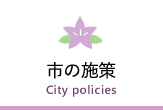ウクライナと日本の庭園から感じたこと
更新日:2025年7月3日
広報かまがや6月1日号
ウクライナ文化において、庭園は特別な役割を果たしています。民謡で讃えられ、詩の中で記憶され、芸術家によって絵画に描かれることも少なくありません。ウクライナ人にとって、庭園は単に美しいものというだけでなく、生活し、くつろぎ、遊び、自然を楽しむための空間なのです。
伝統的なウクライナの庭園には、サクランボ、リンゴ、プラムなどの果樹に加え、ベリー類、香りの良いハーブ、色とりどりの花が植えられています。田舎では、庭にミツバチの巣箱があるのもよく見かけます。都市部でも、公園に果樹が植えられていることが多く、人々は木から直接果物を摘むのを楽しんでいます。
先日、子供たちと一緒に金沢を訪れました。金沢は美しい伝統的な庭園と洗練された日本庭園の造園技術で有名です。私たちは丁寧に手入れされた日本庭園のある古民家に宿泊しました。信じられないほど静かで美しい場所でした。大人になった今、私は日本庭園の美しさ、そのバランス、細部へのこだわり、そして調和の感覚に深く感銘を受けています。しかし、母親として、そして幼少期を祖母の庭の桜や桑の木に登って過ごした者として、子どもたちにはこうした空間があまり理解されていないことに気づきました。
子どもたちは「どうして庭に入れないの?」「どうして石に触ってはいけないの?」「果物は取れないの?」と尋ねました。これは私たちにとって、文化の対比を感じさせる瞬間でした。日本の伝統において、庭園は遊び場ではなく、瞑想、静寂、そして季節の美しさを鑑賞するために造られたものです。庭園は私たちに、ゆっくりと時間をかけ、注意深く観察し、静かに、敬意を持って自然と繋がることを教えてくれます。
対照的に、ウクライナの庭は動き、笑い、そして触れ合いに満ちています。裸足で走り回ったり、木から直接果物を食べたり、祖父母の水やりを手伝ったり、芝生に寝転んでミツバチの音を聞いたり。庭は家族の日常生活の一部なのです。この経験を通して、私は考えさせられました。他の文化圏の人々は庭とどのように関わっているのでしょうか?インド、フランス、モロッコにおいて、庭とは一体何を意味するのでしょうか?瞑想の場、家族の集いの場、それとも食料生産の場なのでしょうか?世界中の庭には、どんな感情や思い出が宿っているのでしょうか?
それぞれの文化には、自然との関わり方があります。庭というレンズを通して、私たちはそれらの違いをより深く理解し、そしておそらく私たちが共有する人間性をより深く理解できるでしょう。
英語版
Ukrainian and Japanese Gardens
In Ukrainian culture, gardens play a very special role. They are often praised in folk songs, remembered in poetry, and painted by artists. For Ukrainians, a garden is not only something beautiful to look at - it is a space for living, relaxing, playing, and enjoying nature.
Traditional Ukrainian gardens are full of fruit trees like cherries, apples, or plums, along with berry bushes, fragrant herbs, and colorful flowers. In the countryside, it’s also common to see beehives in the garden. Even in cities, fruit trees are often planted in parks - people enjoy picking fruit directly from the tree.
Recently, I visited Kanazawa with my children. The city is famous for its beautiful traditional gardens and the refined art of Japanese landscaping. We stayed in an old house with a carefully maintained Japanese garden. It was incredibly peaceful and beautiful.
As an adult, I deeply admire Japanese gardens - the balance, the attention to detail, and the sense of harmony. But as a mother - and someone who spent her childhood climbing cherry and mulberry trees in my grandmother’s garden - I realized that my children didn’t quite understand this kind of space.
They asked, “Why can’t we go into the garden?” “Why can’t we touch the stones?” “Are there no fruits to pick?”
This was a moment of cultural contrast for us. In Japanese tradition, gardens are not places to play - they are designed for contemplation, silence, and appreciation of seasonal beauty. They teach us to slow down, to observe carefully, and to connect with nature in a quiet, respectful way.
In contrast, Ukrainian gardens are full of movement, laughter, and touch. You can run barefoot, eat fruit straight from the tree, help your grandparents water the plants, or lie in the grass listening to bees. The garden is part of everyday family life.
This experience made me think: how do people in other cultures relate to gardens? What does a garden mean in India, France, or Morocco? Is it a place for meditation, family gatherings, or food production? What kinds of emotions and memories do gardens hold around the world?
Every culture has its own way of interacting with nature. Through the lens of the garden, we can better understand those differences - and perhaps appreciate our shared humanity even more.
問い合わせ
総務企画部 企画財政課 企画政策室
〒273-0195 千葉県鎌ケ谷市新鎌ケ谷二丁目6番1号 市庁舎3階
電話:047-445-1073
ファクス:047-445-1400







